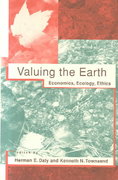Question
2. True or false. Based on the models discussed in Williamson (2014) and Whelan (2020), determine if the following propositions are true or false. If
2. True or false. Based on the models discussed in Williamson (2014) and Whelan (2020), determine if the following propositions are true or false. If true, prove it mathematically or graphically (including a brief explanation). If false, provide a counterexample or a rigorous argument. (a) The price level is countercyclical in the US data and the monetary intertemporal economy model can predict that. (b) In the monetary intertemporal economy model, if the economy is regularly hit by persistent TFP shocks (z = z > 0), then we can obtain the procyclicality of C, I, w, and N. (c) An increase in government spending financed with money printed by the central bank can gen- erate a rise in both output and the price level.
(d) In the New Keynesian model, if a central bank achieves an inflation rate equal to the inflation target ( = ), it can also fully stabilize the output gap (y = y) in the absence of aggregate shocks ( = y = 0). (e) Consider two economies, A and B, whose central banks (CBs) use monetary policy rules. Both economies and CBs share the same parameters (, ), inflation target (), inflation expectations (e), and natural output level (y). The only difference is that A uses strict inflation targeting and B uses flexible inflation targeting. Then, if the economy is regularly hit by persistent supply shocks, output is more volatile in A than is in B.
Step by Step Solution
There are 3 Steps involved in it
Step: 1

Get Instant Access to Expert-Tailored Solutions
See step-by-step solutions with expert insights and AI powered tools for academic success
Step: 2

Step: 3

Ace Your Homework with AI
Get the answers you need in no time with our AI-driven, step-by-step assistance
Get Started


